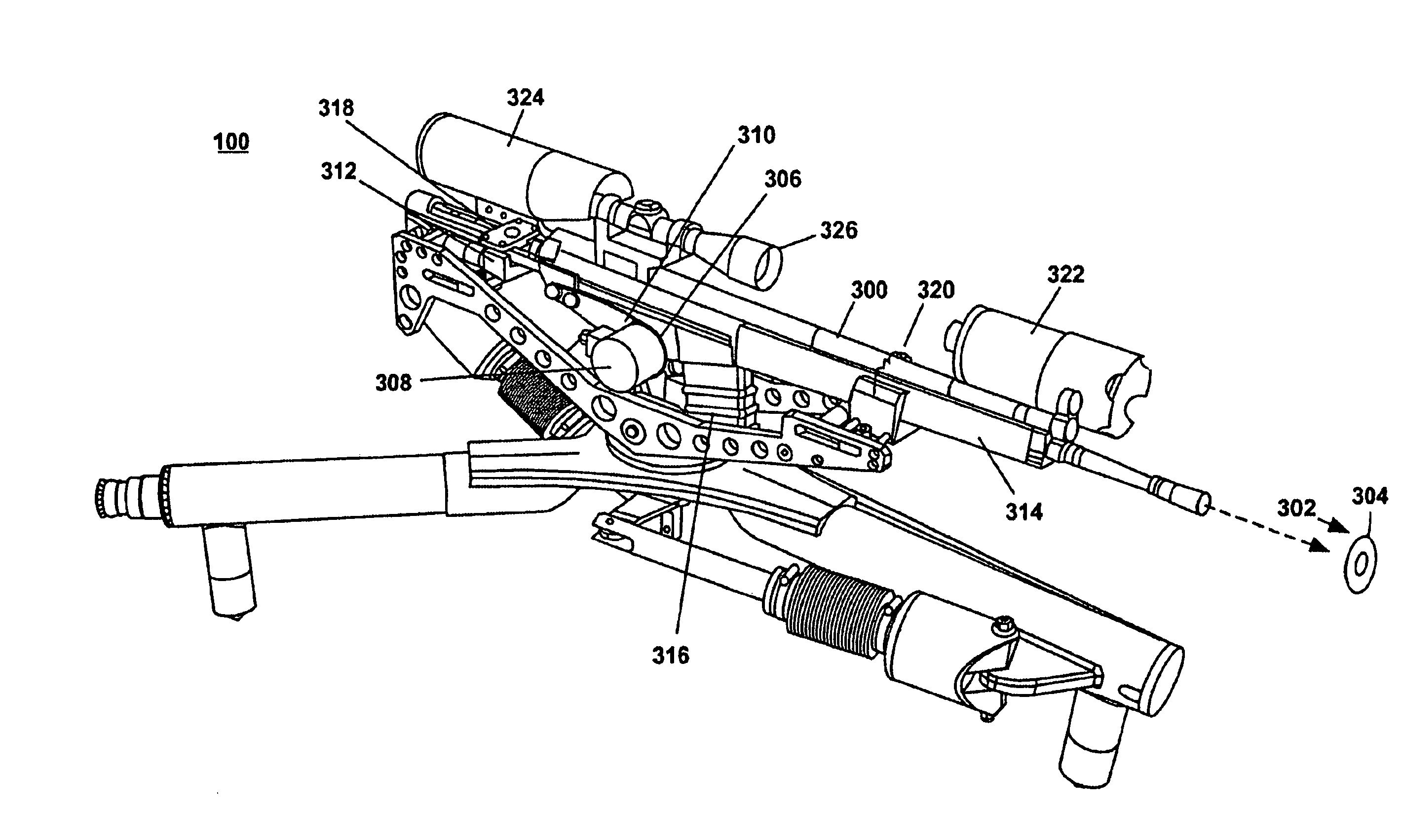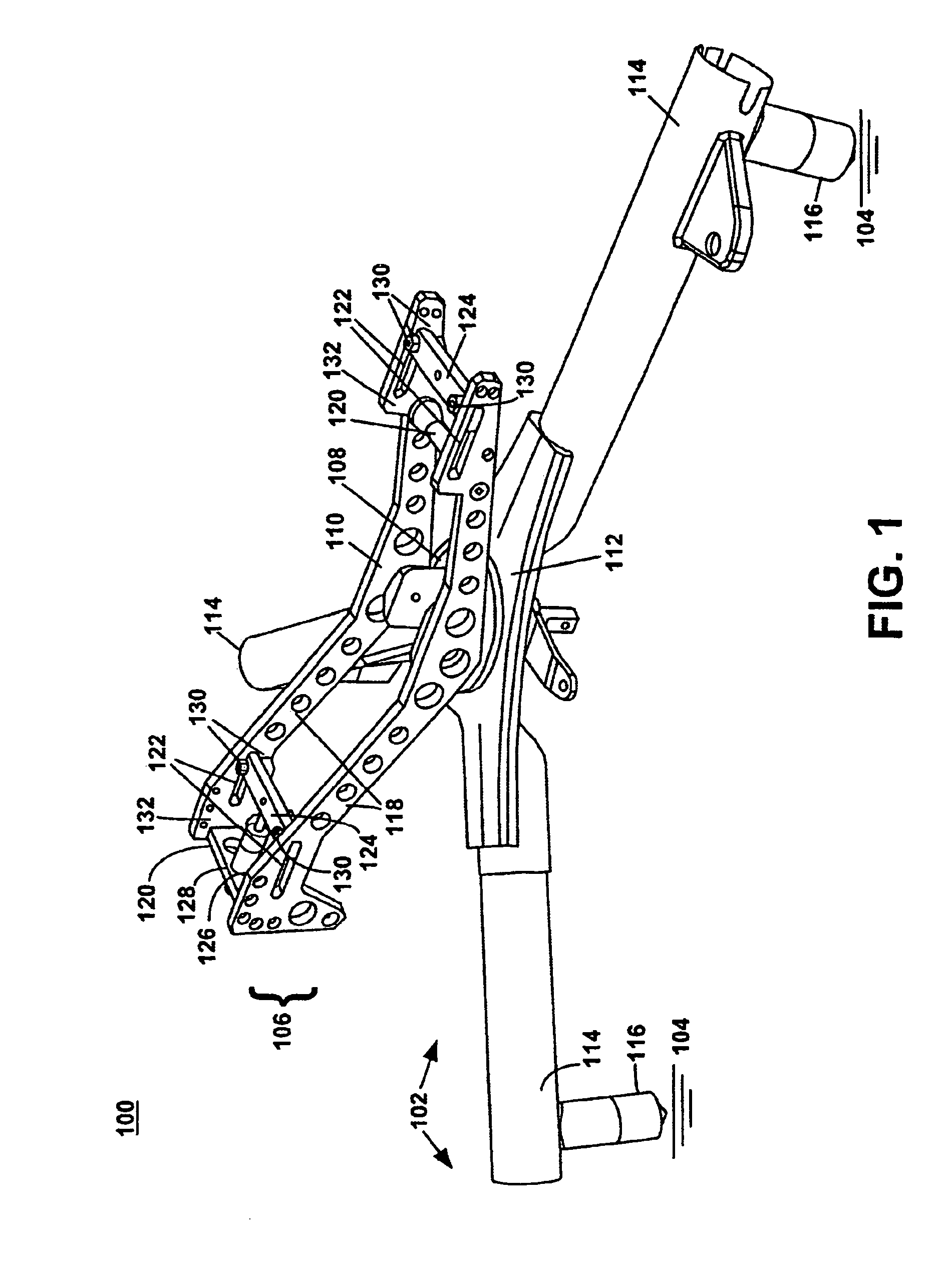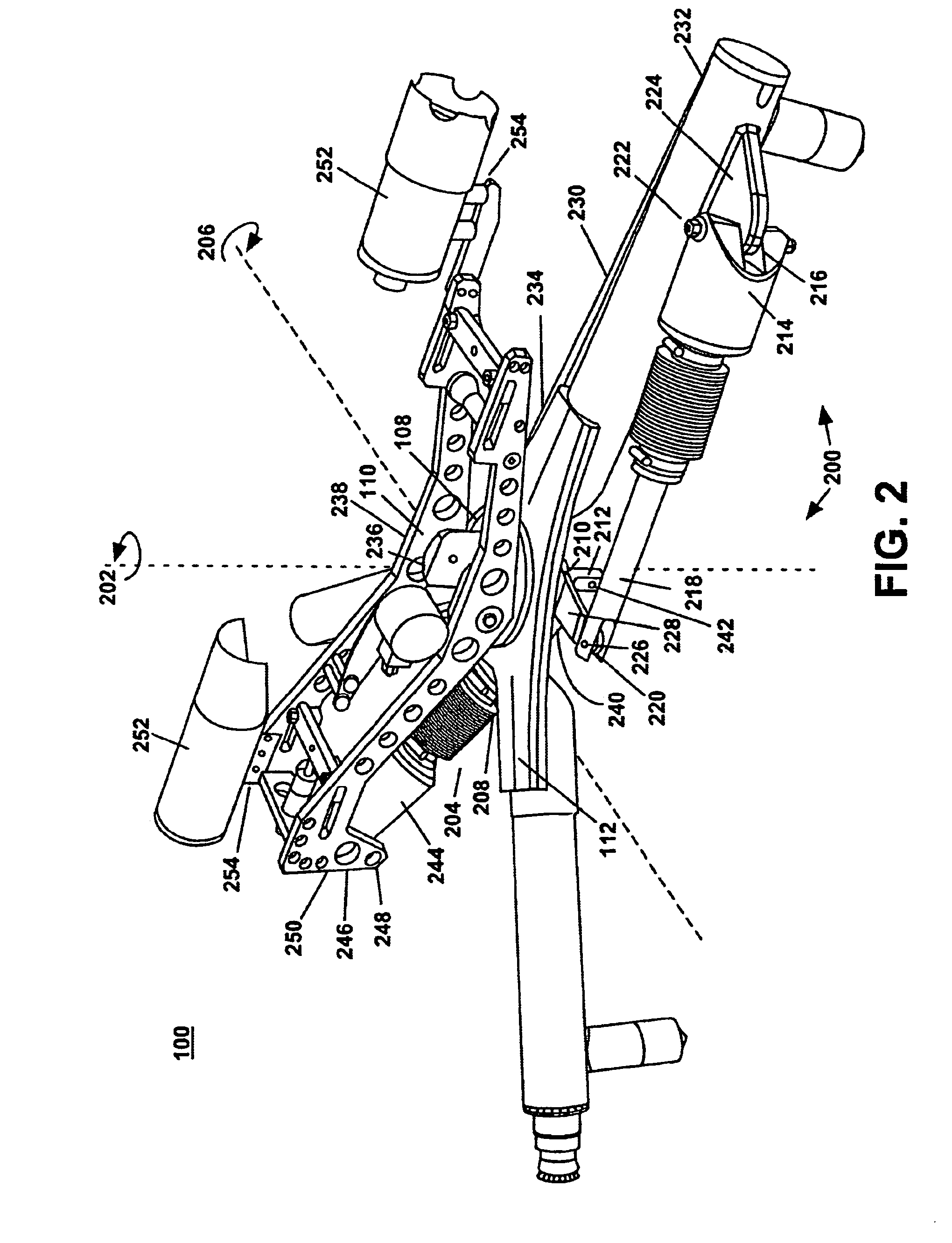Remote aiming system with video display
a remote control and video display technology, applied in the field of remote control aiming systems, can solve the problems of firearms not providing continuous or real-time feedback on the current point of aim, affecting the accuracy of aiming, and presenting special safety and operational difficulties for operators, etc., and achieve the effect of increasing the speed of positioning
- Summary
- Abstract
- Description
- Claims
- Application Information
AI Technical Summary
Benefits of technology
Problems solved by technology
Method used
Image
Examples
Embodiment Construction
[0028]Reference will now be made in detail to the described embodiment of the invention, so as to enable a person skilled in the art to make and use the invention in the context of a particular application and its applications, namely that of aiming a firearm. It is understood that this example is not intended to limit the invention to one preferred embodiment or application. On the contrary, it is intended to cover alternatives, modifications, and equivalents. Various modifications to the present invention will be readily apparent to one of ordinary skill in the art, and can be made to the described embodiment within the spirit and scope of the invention as defined by the appended claims.
[0029]For a better understanding, components of the described embodiment are labeled with three-digit component numbers, the first digit of which corresponds to the first figure in which such component appears and is labeled. Like components are designated by like reference numerals throughout the ...
PUM
 Login to View More
Login to View More Abstract
Description
Claims
Application Information
 Login to View More
Login to View More - R&D
- Intellectual Property
- Life Sciences
- Materials
- Tech Scout
- Unparalleled Data Quality
- Higher Quality Content
- 60% Fewer Hallucinations
Browse by: Latest US Patents, China's latest patents, Technical Efficacy Thesaurus, Application Domain, Technology Topic, Popular Technical Reports.
© 2025 PatSnap. All rights reserved.Legal|Privacy policy|Modern Slavery Act Transparency Statement|Sitemap|About US| Contact US: help@patsnap.com



